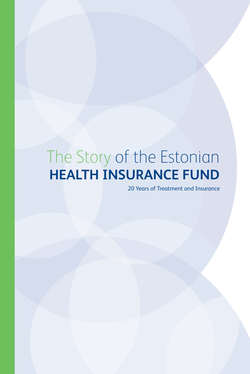The Story of the Estonian Health Insurance Fund. 20 Years of Treatment and Insurance

Реклама. ООО «ЛитРес», ИНН: 7719571260.
Оглавление
Grupi autorid. The Story of the Estonian Health Insurance Fund. 20 Years of Treatment and Insurance
I. Development of Health Insurance: 1912–1991
II. Formation of the Estonian Health Insurance System: 1992–2000
The Story of the Health Insurance Act
1991 – Entry into Force of the Health Insurance Act
Formation of Prices of Health Care Services
The Origination and Work of Health Insurance Funds
How the Central Health Insurance Fund Originated
Establishment of the Family Physician System
1994–1997 A Time of Major Changes
Strengthening the Health Insurance Fund’s Status, Adopting the Current Bearing
World Bank Aid and Health Care Reforms
Health Care Reform: Package of New Legislation
Reforms as Seen by a Lawyer
Reforms Take Effect: Like from a Textbook
Establishment of the Hospital Network Development Plan
Change in the Medication Compensation System, Introduction of Reference Prices
III. Entrenching of the Chosen Direction: 2001–2012
Strategic Development Plan
Creation of New Systems
Updating Price Formation for Health Care Services
Origination of the Competency Model and Scorecard System
Selection of Health Care Services Providers
Improving the Quality of Health Care Services
Creation of an Electronic Certificate of Incapacity for Work
Creation of Digital Prescription
Transition from Paper Prescriptions to Digital Prescription
Much Remains to Do
Economic Crisis of 2008–2010
Use of Reserves
Difficult Decisions
Medical Treatment Waiting Lists
About the Future of Health Insurance as Seen by the Health Insurance Fund
A Glance into the Future
The Future Perspectives of Health Insurance
Отрывок из книги
Otto von Bismarck.
The history of sickness insurance extends back to the 19th century when the first sickness insurance act was passed into law in Germany in 1883 at the initiative of Otto von Bismarck. Why was this necessary?
.....
Tartu General Health Insurance Fund activity report in 1939.
Estonia was conspicuous in Europe with its relatively low proportion of sickness insurance – only 17.9 % of the population was covered. Sickness insurance essentially remained the privilege of industrial workers and recipients of the Vabadusrist (Cross of Liberty). Persons who worked in agriculture, education, or some other sector and the members of their families had to pay for health services themselves. It was not until the latter half of the 1930’s that several acts of legislation went into effect that extended sickness insurance to civil servants and governmental employees, university teachers and professional military personnel together with the members of their families.
.....